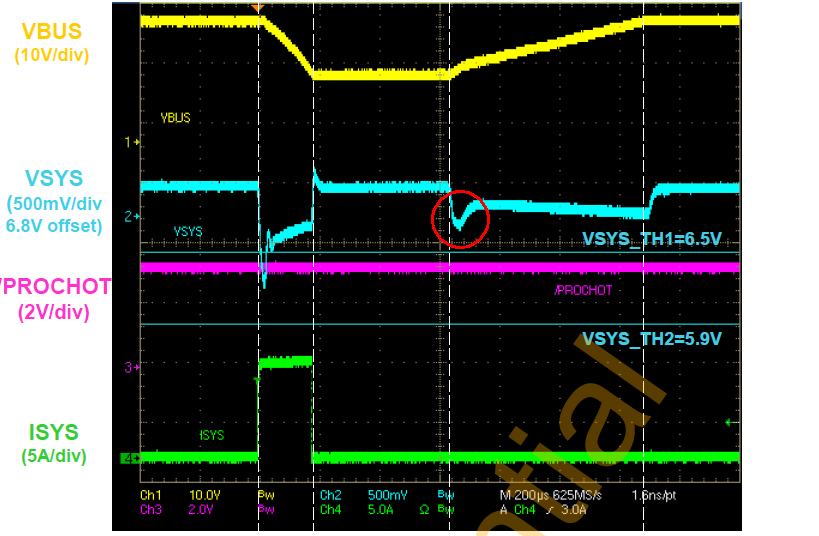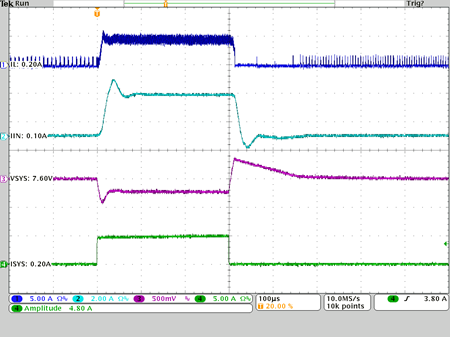Hello
Customer find out VBUS can not charge due to VSYS trigger Vth1 and retry 7 times still not achieve target voltage. So the charger is VAP failed. Per waveform, customer decrease OTG current to 0.3A and let VBUS charge to 20V. Then customer set OTG current 0.5A, but VBUS voltage will not start up after load current.
1. why can support OTG current to 0.5A to happen VBUS not start up issue?
2. Below waveform, why VSYS has lager Vdop(300mV)?
3. What is OTG setting current ? Is VBUS charging current?
4. After trigger Vth1 10us, VBUS just charge. Does it correct and have de-glitch time spec. ? (Datasheet specified 5us)
5. After trigger Vth2, prochot# active after 6us, Does it correct and have de-glitch time spec. ?
6. For 2S battery design, what is safe VAP setting that have not start up issue ?
7. How to modify charger compensation to get better ripple/transient?
8. Has Ripple/transient spec or waveform for 2S batter application for customer reference?
BR
Patrick



